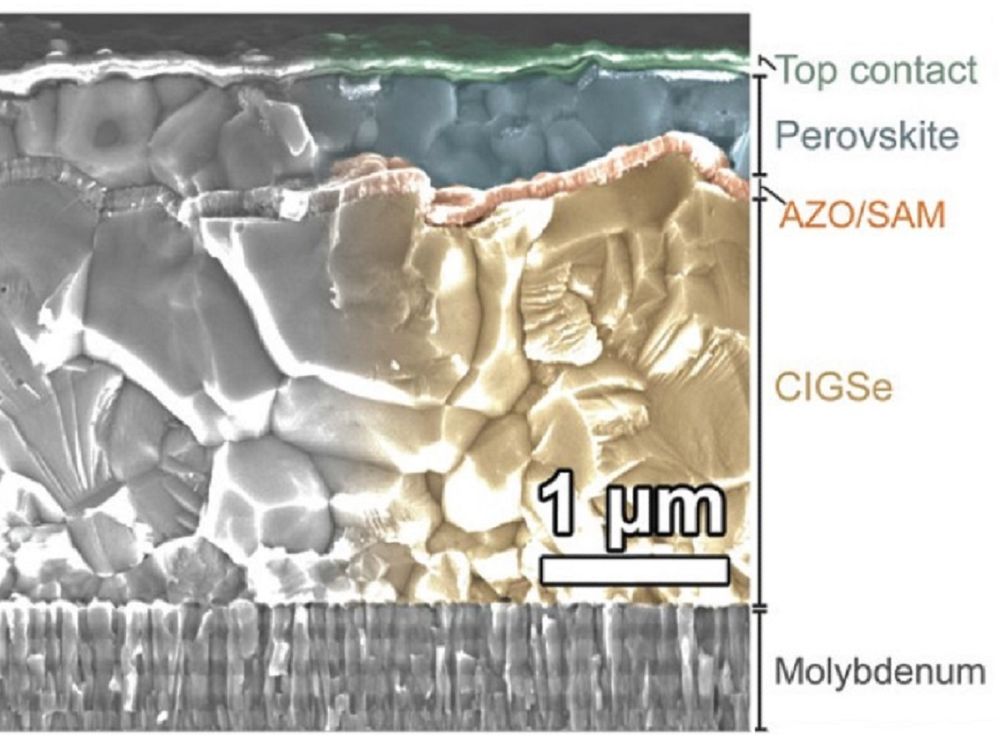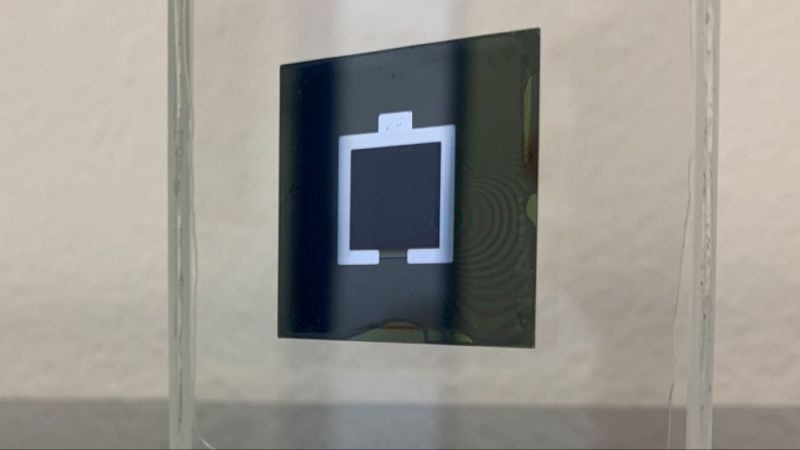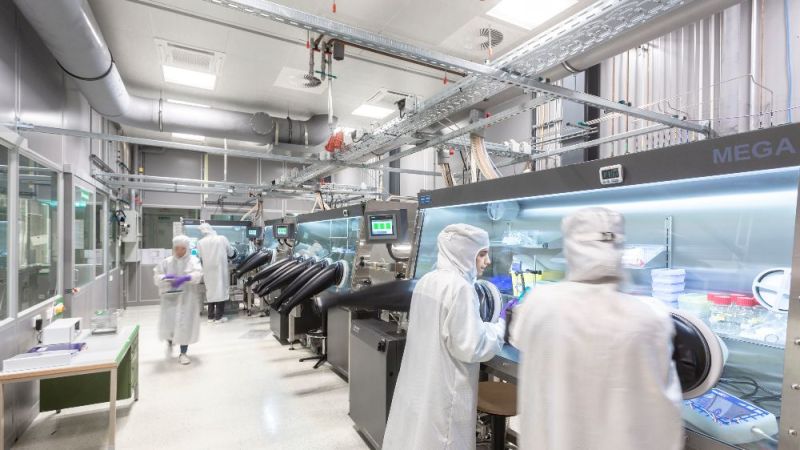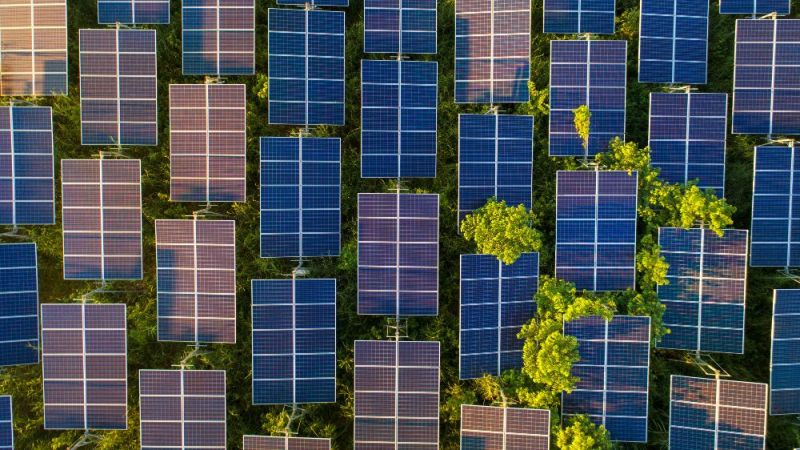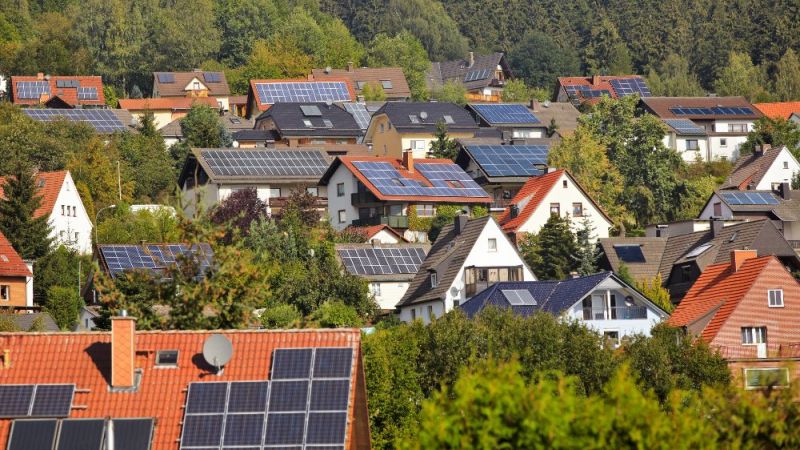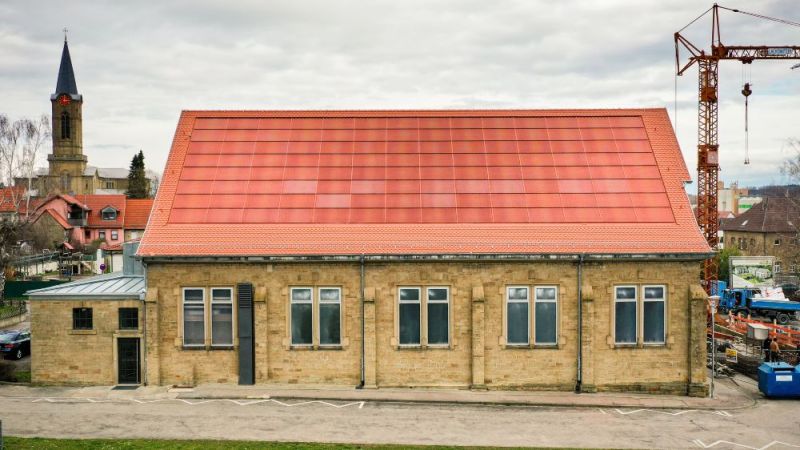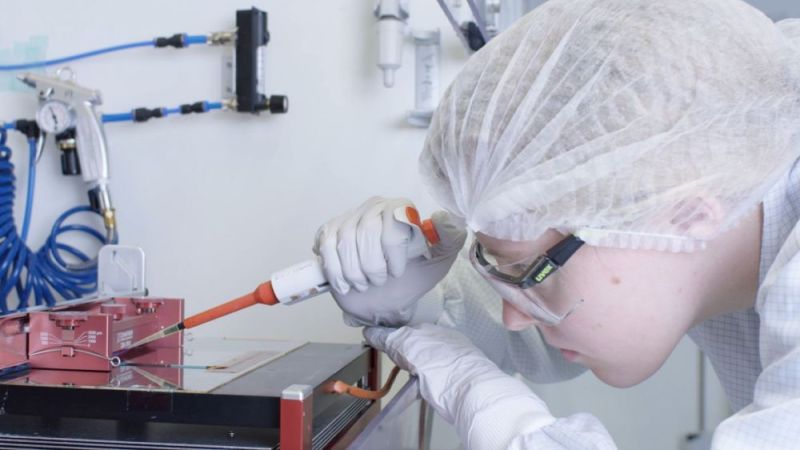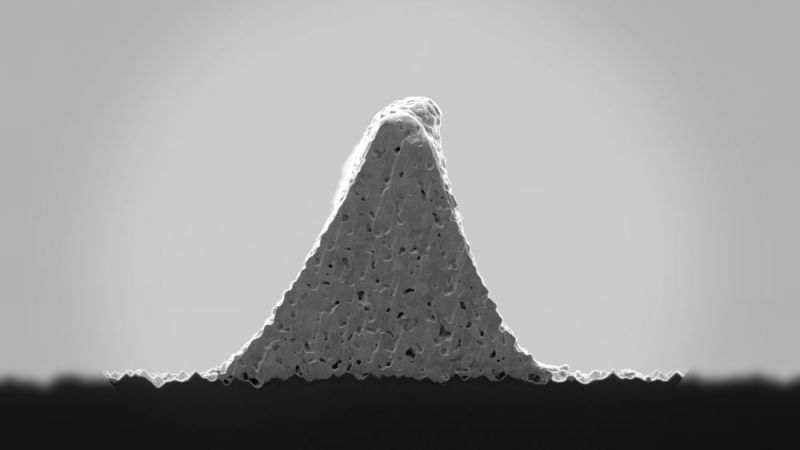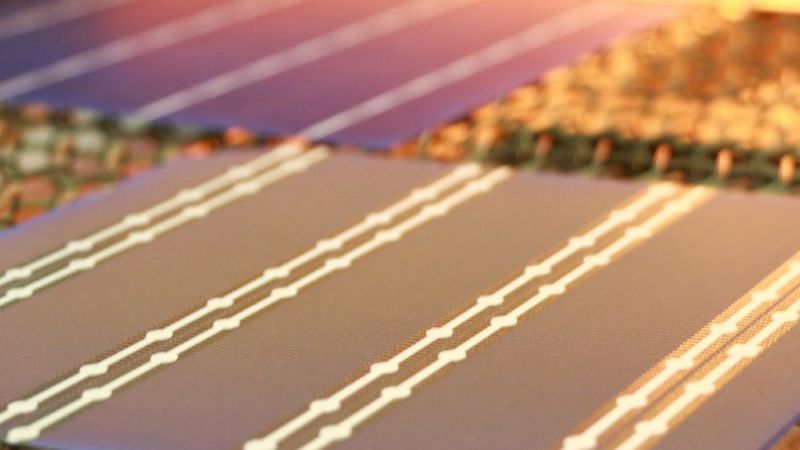Photovoltaics
New record efficiency for CIGS tandem solar cells
In the research project speedCIGS, the project partners have set a new world record with 24.3 per cent efficiency.
With this new value, the scientists from a range of universities, research institutions and companies are exceeding their record from September 2019. Here they already reported an efficiency of 23.3 per cent for their optimised thin-film solar cells made of copper, indium, gallium and selenium - "CIGS" for short. The CIGS layer is combined with a layer of perovskite material on top, interconnected to form a perovskite CIGS tandem solar cell. Perovskites have only been relevant in photovoltaic research for about ten years. Since then, they have also brought about dramatic increases in efficiency in other areas.
The concept uses sunlight particularly efficiently: First, the upper perovskite layer absorbs the short-wave, blue to green sunlight. The long-wave, red to infrared part of the sunlight passes through the upper layer and meets the CIGS layer further down. Both layers thus receive the proportion of sunlight that they can convert into power. In the so-called monolithic arrangement used here, the current flows through both cells, which causes the voltages to add up.
Contact layer of the tandem solar cell is transparent and conductive
In the speedCIGS project, the project partners focused on the contact layer, which is located between the two layers. This must be both transparent to sunlight and also provide good electrical contact between the materials. The work on the contact layer is part of the work of the project partner Helmholtz-Zentrum Berlin (HZB) at the Competence Centre for Photovoltaics "PVcomB". The junior research group of Professor Steve Albrecht based there, which is funded by the German Federal Ministry of Education and Research, is also involved. "The doctoral students and post-docs have made an enormous contribution to the success of the work here," says Professor Johannes Windeln, project coordinator at the Wilhelm Büchner Hochschule Darmstadt, thanking the young scientists.
At 24.3 per cent, CIGS technology achieves efficiencies comparable to those of conventional silicon technology. "As there are still more good ideas for further development on the table, we also anticipate that the speedCIGS project is likely to improve the record by the end of 2020," predicts Johannes Windeln.
Closing the gap between laboratory and industrial production
Launched in 2016, the overall objective of the project is to close the gap between the efficiencies achieved in the laboratory and those that will later be achieved in industrially produced modules. The speed of manufacturing processes is an important factor for the economic efficiency of the product - hence the name "speedCIGS". Another starting point for research and development is to reduce imperfections within the structure. Alkali elements are also the focus of research. Alkali is used to dope the solar cells. In this process, a small number of foreign atoms are added to the semiconductor layer to influence the electrical conductivity. The correct approach here has a significant impact on the efficiency of CIGS solar cells.
The work of the project also yields successes in the field of conventional CIGS technology. At the end of last year, the project partner NICE Solar Energy was already able to report a world record in the field of industrially produced CIGS modules, which was made possible in part by the findings from SpeedCIGS. Independently of speedCIGS, HZB was also able to report record efficiency levels in the field of perovskite silicon tandem solar cells earlier this year.


